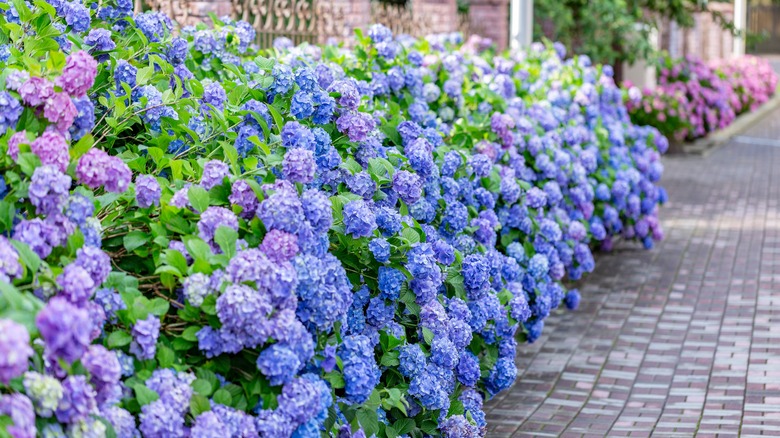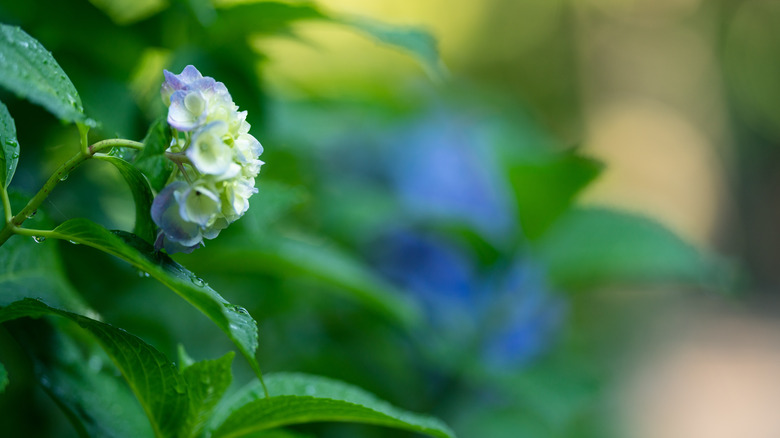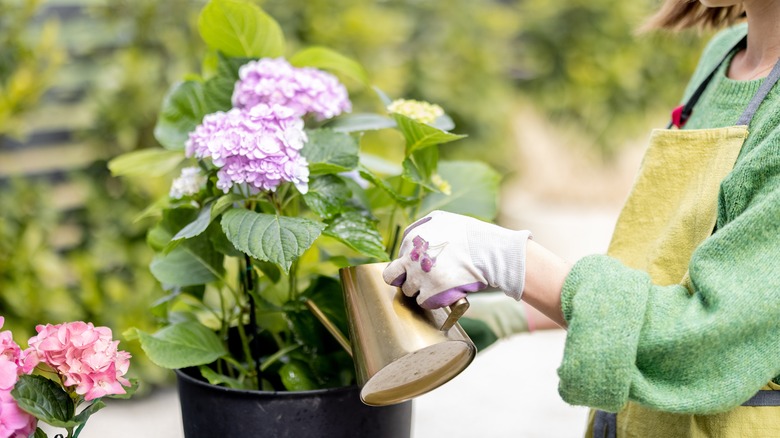How And When To Fertilize Your Hydrangeas
The hydrangea genus is known for its many species and cultivars that provide gigantic clusters of colorful flowers and wide green foliage that hold their own beauty when the bush isn't in bloom. When you're growing these popular plants at home, you do not want to neglect their needs. Hydrangeas have simple yet specific growing requirements that need to be met. For a spectacular show in the summer months, you should aim to fertilize them correctly. With proper care, this will not be any more difficult than feeding other common flowering plants.
Still, it's essential that you read up on the best care for your hydrangeas and follow the instructions on the fertilizer you choose to see the best results. While the fertilization process is not hard to figure out, you will have to get your hands dirty in the garden a few times to keep the hydrangeas healthy and strong. Below we've detailed the best fertilizers and the best steps for hydrangea bush feeding so your plants can outshine all the others.
Which fertilizer to buy for your hydrangeas
Thankfully, you will not have to search high and low for a special fertilizer for your hydrangea bushes. They are not particularly picky plants, and they will happily grow with the help of some organic, slow-release fertilizer. Don't worry if you are growing more than one variety of species of hydrangeas, either — all types will appreciate this basic fertilizer. Seasoned gardeners typically choose a 15-10-10 or 10-5-5 ratio that is meant for roses. This is the best option if you are looking to grow large and prolific blooms that will stun your neighbors. However, if you don't mind the natural growth of your hydrangea bushes, a balanced fertilizer with a 10-10-10 formula is a perfectly fine option that provides your plants with all the nutrients they need.
Be careful not to purchase quick-release fertilizer for your hydrangeas. These typically release too much nitrogen too quickly, which your plants will not appreciate. Too much nitrogen will cause plenty of growth, but all in the wrong areas. The foliage will grow quickly and the flowers will be smaller and more spread out come bloom time.
When to get the feeding process started
Hydrangea bushes should be fed at least twice per year, and even three times in some instances. If you are looking to grow large and colorful blooms atop gorgeous foliage, you should fertilize in the very early parts of spring, just before summer in May, and again at the peak of the summer. However, hydrangeas planted in rich organic matter may not need this third feeding in the hotter months. Depending on your soil, fertilizing the plants three times could lead to overfertilization, which creates smaller blooms.
When you're ready, apply the fertilizer to the soil beneath your bushes. Locate the drip line around your plant. The drip line is a circle around the perimeter of a plant where the rain, and other water, naturally drip off of the farthest-reaching branches or stems. Now, after watering your hydrangea bushes fully, you can apply the fertilizer to this line. Water the plant again immediately after the fertilizer. Do your best not to get the chemicals on the leaves or other parts of the bush. With the second watering, your fertilizer will be able to seep into the soil and spread out evenly to the roots below.


